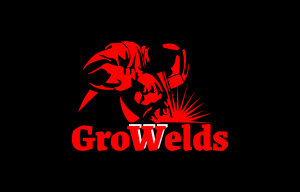Welding Definitions & Abbreviation are essential to understanding the world of welding. Whether you’re new to this craft or looking to refine your knowledge, this guide will introduce you to the basics of welding, explain its key terms, and explore various welding processes..
Welding is a process by which two or more pieces of metal are joined together to form a single piece of metal. The types of metals welded together can vary greatly depending on the desired result; however, most welds are performed with steel. Steel welding can be done with either the manual (stick) method or the automated (arc) method. In addition, welding can be performed using one- or two-component filler metals.

What is Welding?
Welding is a process that involves joining metals together. To fully grasp this craft, understanding Welding Definitions & Abbreviation is crucial for clarity and precision.
To weld, a filler metal is used to combine the two pieces of metal together. The filler metal melts at a lower temperature than the base material being welded, allowing the two pieces of metal to move closer together. This causes them to bond into one piece.
The metal filler in a weld is melted directly by the heat of the base metal, but once it reaches the surface of that base metal, it will cool off and solidify.
Welding is one of the most versatile processes used to join metal. It is used to make joints ranging from simple plate-to-plate welds to more complicated items such as automobiles and airplanes.
Types of Welding
Several types of welding can be used for different purposes. Each one affects the metal differently and has a different look, as well. Here are a few weld types:
Filler Metal
The filler material is normally made up of metals such as aluminum, stainless steel, or copper. It melts at a much lower temperature than the base metal being welded to, allowing the two pieces of metal to move closer together and bond faster.
Welder Types
There are different types of welders used in the welding process. Each one has a different set of characteristics and can be used for different purposes. Here are a few:
The Manual (Stick) Welder
This type of welder is simple and uses an electric arc to rapidly heat the metal. A rod made from a filler metal is attached to each piece of metal being welded. When the electric current is turned on, it melts the filler material’s rod and warms the base metal.
The Automatic (Arc) Welder
This type of welder is simple and uses an arc to rapidly heat up the metal. The base is placed in an enclosed area, and a filler rod feeds into the top of this enclosed space. When the arc is turned on, it melts the filler rod and warms up both metals at once.
The Plasma Arc Welder
This type of welder is similar to the automatic welder, but instead of heating the metal with an arc, a plasma is used. This heats both metals at once and saves on energy costs.
The Anode Cable Welding Method The anode cable welding method has no filler material. To weld the two pieces of iron together, the anode cable (which has a rod) is placed in between the iron pieces at 90 degrees. The anode cable is then activated, lighting up the rod and heating up the iron pieces. Once the iron melts, it combines with the other piece of metal and solidifies.
Plasma Arc Welding
Plasma arc welding uses plasma created by high temperatures to join materials together. This is a very useful type of welding in which the heat from the plasma causes alloys to melt. The heat from the plasma then heats up other materials enough so that they can melt together.
Plasma arc welding is best used for high-temperature applications such as welding railroads and welding pipes. This type of welding is also good for joining different types of metals (or alloys) together.
Arc Welding
This method uses an electric arc, which powers an electrode wire to carry current from the power source to the metal being welded. The arc welds the metal together with a molten metal filler.
The Metal Filler
The filler material is usually something that looks like an adhesive, such as aluminum. It melts at a much lower temperature than the base metal being welded to; however, it can still melt and solidify when the two parts are in contact with each other.
Rod Gas Tungsten Inert Gas
This method uses a hot wire, which is guided by a device called an arc welder to transfer energy. A metal rod is fed into the device, and then electricity is used to heat up both the rod and the wire. The arc welder is able to transfer enough energy to melt the rod, which flows over and melts the other metal.
Plasma Cutting
In this cutting method, an electric arc is used to cut through metal. The arc melts the electrically conductive metal and then uses heat energy to cut through it. This method is used to cut through metal using a plasma torch.
Final words
So there you have it, a quick and simple explanation of what welding is! We hope this gave you some insight into this interesting process. If you’re interested in learning more about welding, check out our blog post on the basics of welding equipment.
Conclusion
By learning the Welding Definitions & Abbreviation provided in this guide, you’ll be better equipped to understand welding processes and terms.
Note: ElectroWeld is reader-supported. If you click a link and buy something we may receive a small commission at no extra cost to you., learn more on disclaimer.

Walton M. Edwards was born in 1994 in a coal mining town, he has worked as a welder, a hardware salesman, and as a pipe fitter and has been employed as a laborer for about fifty years. Walton is a native of Wabash County in Indiana, but he now resides in Bloomington, Indiana.





What is the difference between MIG and TIG welding?
MIG welding uses a continuously fed wire electrode to create the arc and deposit filler metal into the weld joint, while TIG welding uses a tungsten electrode to create the arc and filler metal is added separately. MIG welding is faster and easier to learn than TIG welding, but TIG welding provides better control and produces higher quality welds.